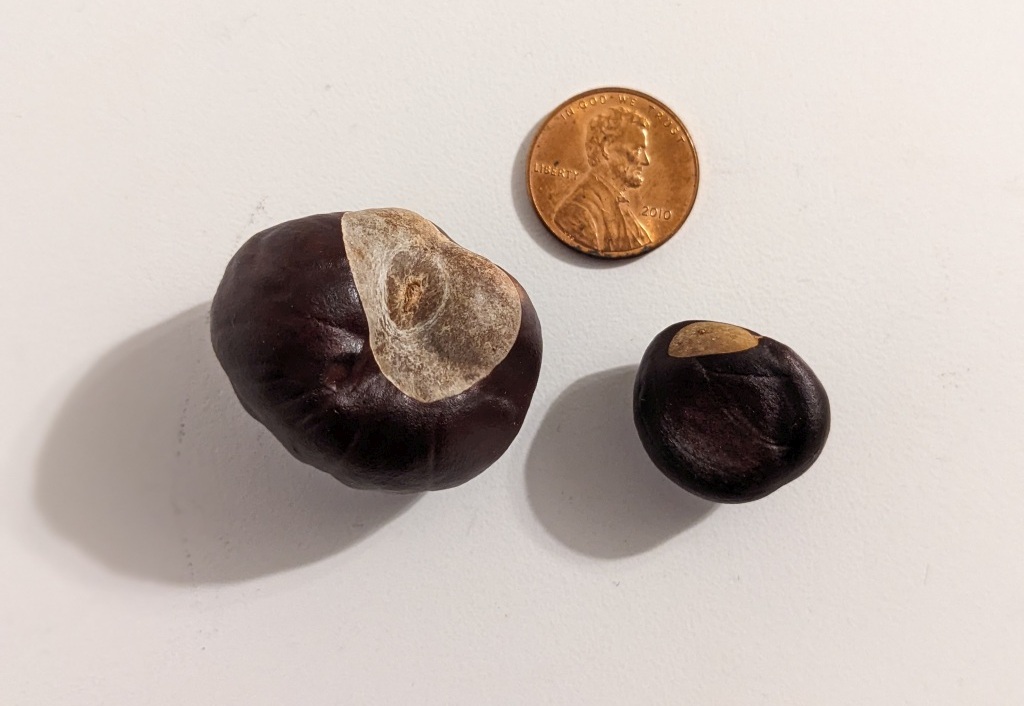
6 December 2023
The Nutty Series: Buckeyes are the Aesculus genus
Buckeyes have always been one of my favorite objects because their skin is smooth and shiny fresh out of the husk, perfect to carry in my pocket like a worry stone.
In America, the native Aesculus are commonly
— Arboretum FOundation (in Seattle): The Many Faces of Aesculus
called “buckeyes,” a name derived from the
resemblance of the shiny seed to the eye of a
deer [a buck’s eye]. In the Old World, they’re called “horse
chestnuts”—a name that arose from the belief
that the trees were closely related to edible
chestnuts (Castanea species), and because the
seeds were fed to horses as a medicinal treatment for chest complaints and worm diseases.
In Pittsburgh we call all of them “buckeyes.”
Let’s go backwards in the growing season from nut to husk, flower and leaf by examining buckeyes planted in Schenley Park more than 100 years ago.
The large nut pictured at top left is from a European horse chestnut (Aesculus hippocastanum) native to Albania, Bulgaria, mainland Greece and North Macedonia. Each husk contains one to three nuts. Sometimes they’re flat on one side. My favorites are the round ones.
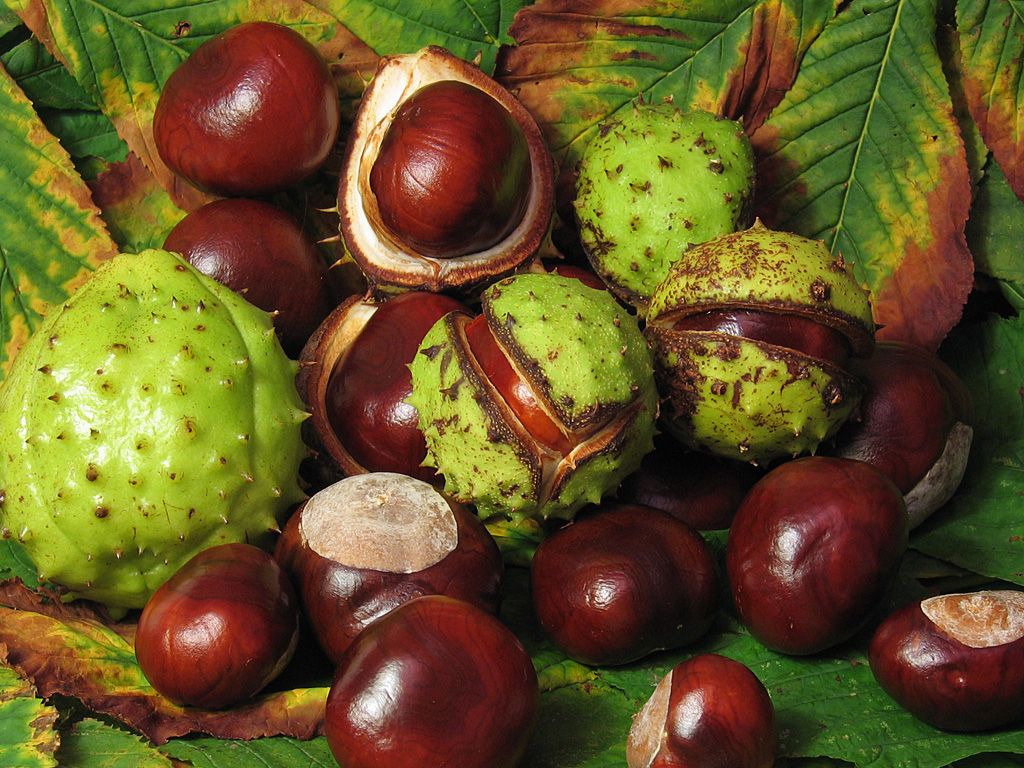
On the tree, horse chestnut husks are spiny.
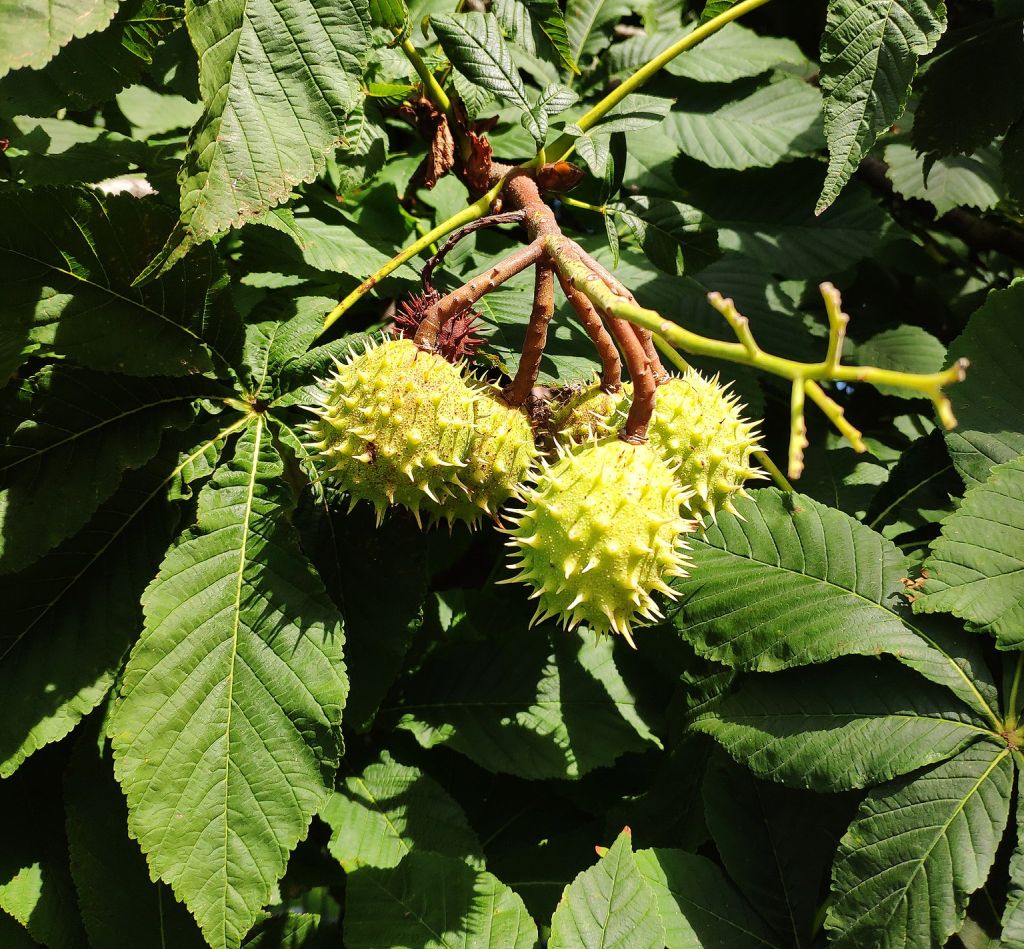
They’re produced from the white flowers that have pink (already fertilized) highlights. Notice that each leaf has seven fat leaflets. The number and shape of the leaflets indicate this is a horsechestnut.
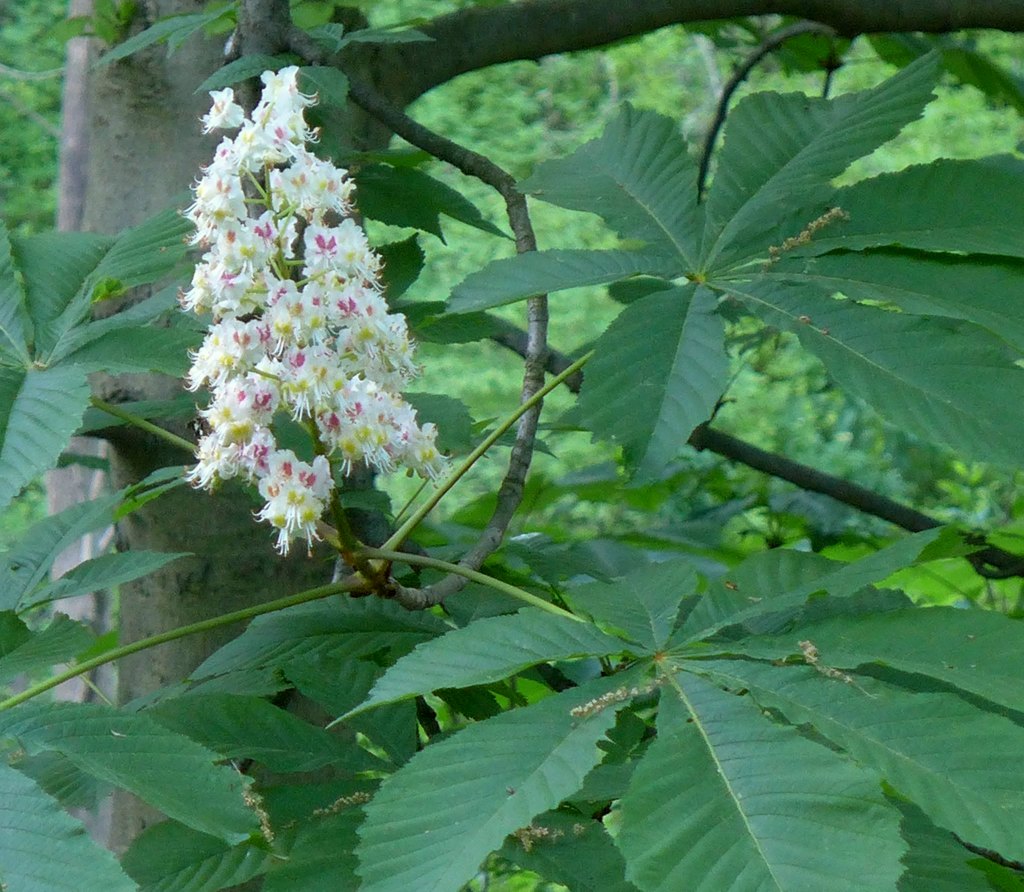
In winter horse chestnuts are easy to identify by their large, sticky end buds.
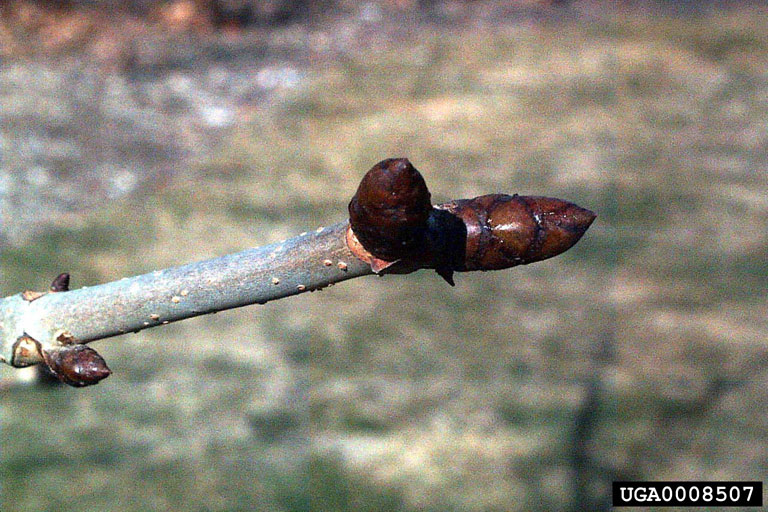
The yellow buckeye (Aesculus flava) is native to the Appalachians and Ohio Valley and is North America’s tallest buckeye tree at 70 feet. Planted as an ornamental in Schenley Park it can hybridize with its shorter cousin, the Ohio buckeye (Aesculus glabra), making identification difficult for non-botanists like me.
Yellow and Ohio buckeye nuts look a lot like horse chestnuts. Seeing the husk is a big help because yellow buckeye husks are smooth …
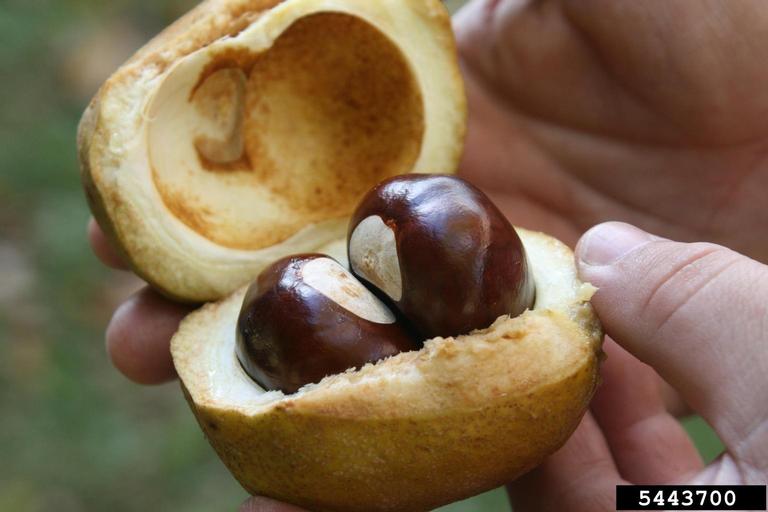
… while Ohio buckeye husks are slightly spiny. The narrow leaves also indicate a native buckeye. (Yes, the leaves looked sick that year.)
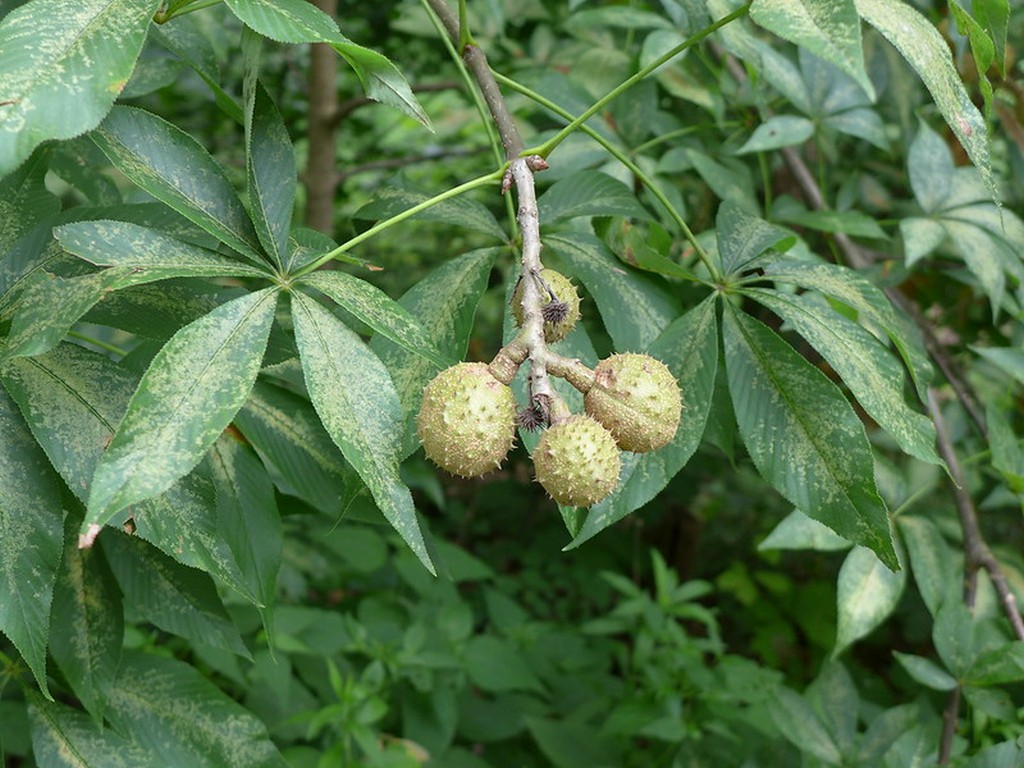
Their flowers are pale yellow (not white) and narrower than the horse chestnut’s. (*)
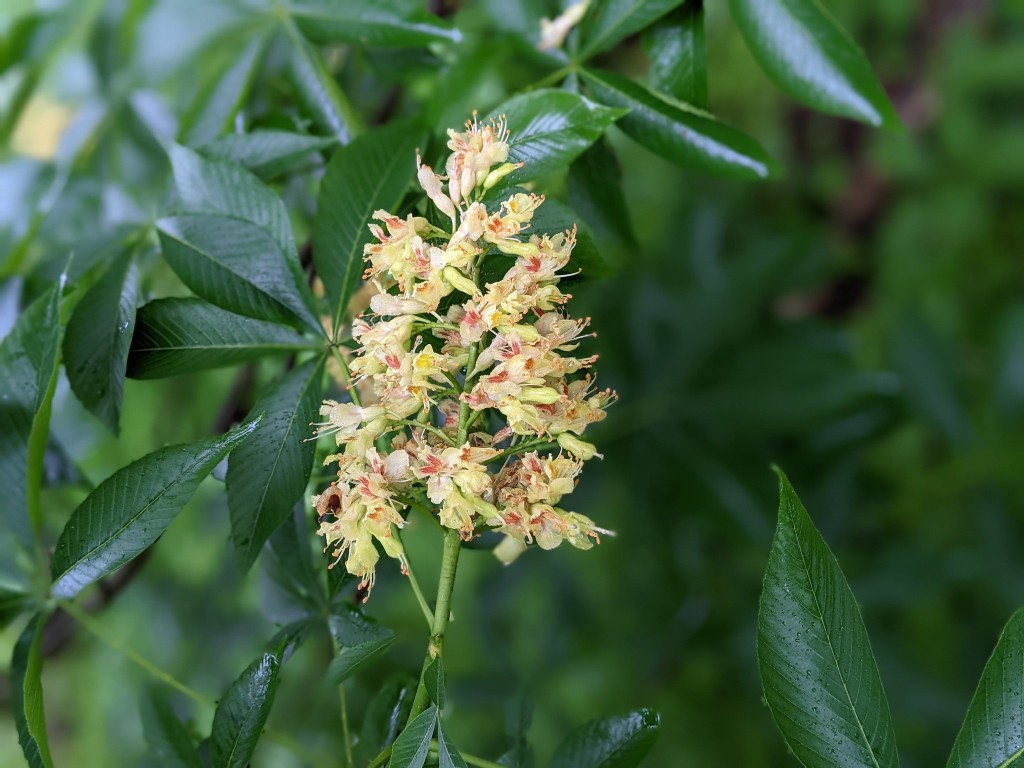
Yellow buckeye buds are large but not sticky. They’re one of the first to leaf out in the spring.
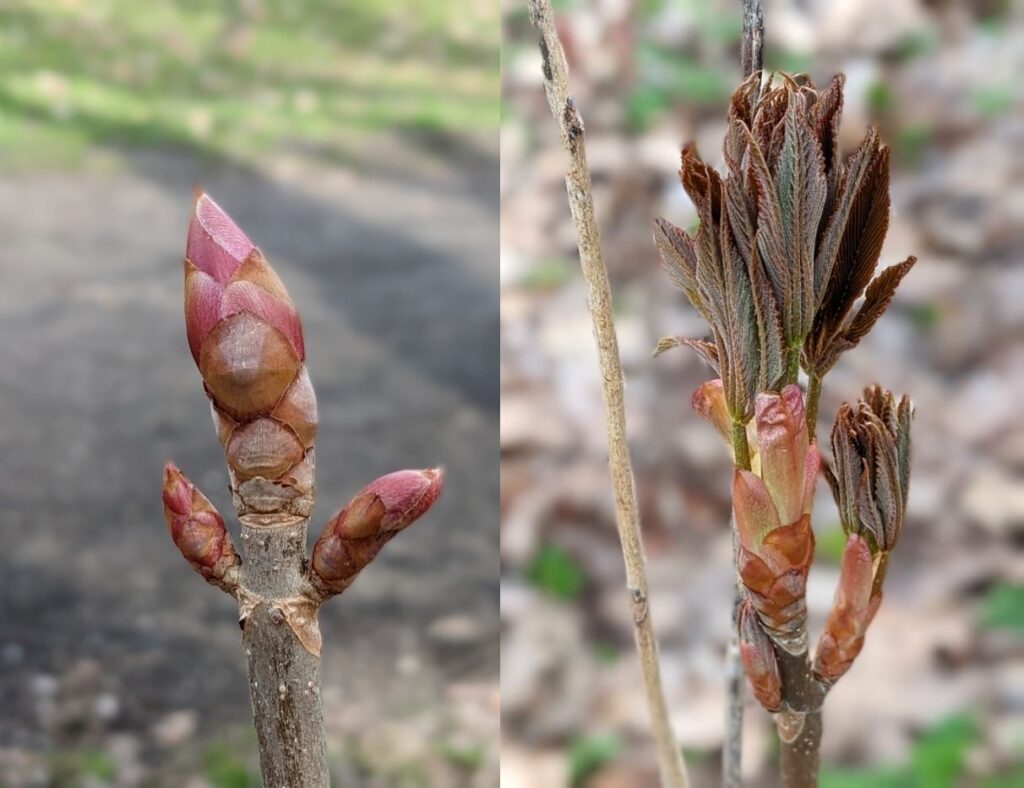
Ohio buckeye buds are strongly keeled.
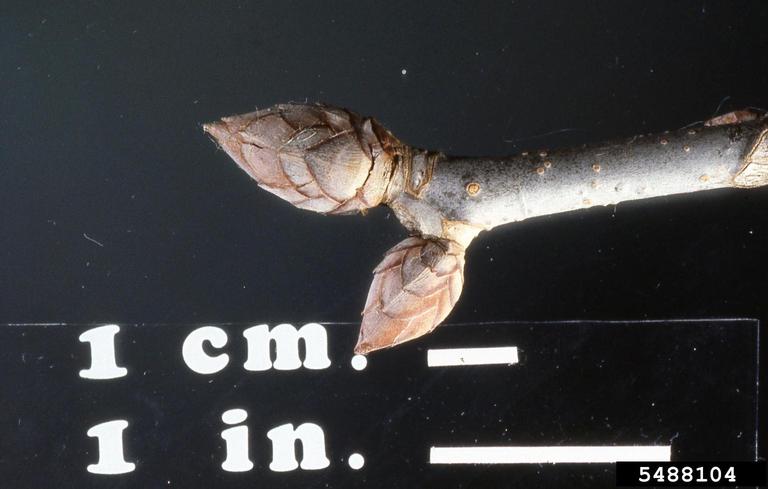
For a summary of nine common buckeyes (Aesculus) used in landscaping see The Spruce: What is a Buckeye?
p.s. The small buckeye nut in the top photo is from the shrub-sized bottlebrush buckeye (Aesculus parviflora), planted in Schenley Park near Panther Hollow Lake. Click here to learn more.
(*) Which Flowers? I could not tell whether the flower photo was yellow or Ohio buckeye. Mary Ann Pike suggests Ohio buckeye in this comment.
Now I know what a Worry Stone is. Learn something new all the time.
In college dendrology class we learned “MAD Horse” as a memory aid for identifying the majority of trees with opposite, not alternate, branching: maple, ash, dogwood, horse chestnut.
I’m thinking Ohio buckeye in the picture of the flowers because of the openness of the flowers and the way the stamens stick out fairly far past the petals.
Thanks, Mary Ann.